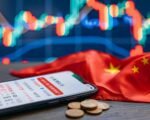A cascade of big-money investments is flowing into Southeast Asia, reshaping once-quiet towns into production hotbeds for advanced semiconductors and artificial intelligence gear. Tension between Washington and Beijing is shuffling supply chains, and nations like Malaysia and Vietnam are cashing in, luring foreign capital and technological know-how.
They’re building new factories on farmland, stacking crates next to old village cafes. Locals watch as property prices shift, workers pour in from overseas, and everyone gossips about which global player might show up next. It’s messy, unpredictable, and a little wild, but it might just define the future of tech manufacturing.
New Factories Rising in Unexpected Spots
In northern Vietnam, caravans of trucks haul sand and steel beams as towering cranes sketch out factories on the horizon. Until recently, fields and dusty roads were the norm here, but now the sound of welding and the scent of fresh concrete hangs in the humid air. People say they never saw so many engineers milling about before.
Meanwhile, in Malaysia’s south, quiet villages and palm oil plantations have morphed into production zones humming with chipmakers and AI startups.
From 2020 to 2023, more than US$100 billion in foreign direct investment poured into Malaysia and Vietnam combined, according to government records and investment agencies. These billions translate into machinery, jobs, housing, and fresh training centers. Long-term projections suggest tens of billions more will follow, linking local economies more tightly to the big players in tech.

Attracting Global Giants and Startup Mavericks
Factories aren’t just pumping out circuit boards. They’re hosting engineers from Tokyo, interns from Berlin, and managers from Silicon Valley who huddle over schematics in makeshift conference rooms. Some folks who once sold produce at the local market are now guarding factory gates or assembling delicate chip parts.
Local laborers see opportunities, but many top-tier positions still go to well-traveled specialists from abroad.
This shift isn’t just about new paychecks. It’s also fueling demand for housing near factories and swelling real estate values. Local shop owners rub their hands with glee, watching fresh customers roll in.
Still, some grumble about rising power demands and price hikes. Pressure mounts on local governments to keep pace with infrastructure like roads, ports, and steady electricity grids.
Tech Boom’s Ripple Effects: Mixed Fortunes
While these countries enjoy a seat at the global manufacturing table, the impact is complicated. Wages rise, but so do costs of living. Job hunters with the right skills can score big, while others struggle to adapt.
To keep it real, let’s note a few quick consequences of this boom:
• Skilled labor shortage: Companies frequently hire foreigners to fill complex roles, leaving some locals on the sidelines.
Firms rush to train local talent, but it takes time. Meanwhile, language gaps and cultural differences spark occasional friction.
Despite hiccups, there’s a sense of forward motion. Villages once off the grid now debate the best cafes for morning coffee, as foreign contractors bring fresh routines and tastes.
It’s odd, but also exciting.
Charting Trends: Locations, Investment, Job Roles
Before guessing the future, let’s map what’s happening today. Foreign direct investment patterns highlight where the money flows and how it reshapes local landscapes. Below is a small snapshot:
| Country | Key Investment Areas | Typical Investor Profiles |
|---|---|---|
| Vietnam | Northern Industrial Parks | Global chipmakers, AI device assembly |
| Malaysia | Southern Tech Estates | Semiconductor giants, Cloud computing |
This table doesn’t cover all angles, but it gives a taste of how regions align with specific niches. Vietnam seems to draw firms seeking cheaper labor and new assembly lines. Malaysia angles for semiconductor manufacturing and computing infrastructure, appealing to firms needing stable policies and established logistics.
Competing for Influence as Giants Circle the Region
The tension fueling this boom isn’t subtle. US-China friction has forced companies to diversify supply chains, cutting reliance on any single partner. They look at Southeast Asia’s stable policies and resource availability, and see a chance to spread out their bets.
For local policymakers, it’s a dance with plenty of moving parts.
They must reassure foreign investors that their money is safe and production timelines won’t slip. They promise stable regulatory frameworks while stepping gingerly around political sensitivities. All the while, they aim to ensure local workers don’t get shortchanged.
Beyond Just Chip Factories: AI and Future Tech
This isn’t just chips, by the way. AI startups find fertile ground too, from voice-recognition software development to assembling high-powered servers. Where once you’d hear about call centers and low-cost textile plants, now engineers chat about data centers and machine-learning clusters.
In some workshops, technicians joke that they fix more code than broken machinery.
Local universities partner with foreign institutes to churn out AI-savvy graduates. Some small towns now host weekend coding bootcamps, hoping a next-gen developer might emerge. Students test prototypes in back rooms of refitted warehouses.
That’s how fast things change. It’s not guaranteed smooth sailing, but fresh aspirations keep popping up.
These shifts mean future headlines might read less about trade wars and more about who built the best chip or trained the smartest AI model in a small Malaysian town.
Whispers of Sustainability and Long-Term Gains
Of course, some observers worry about environmental tolls. Factories need resources, and scaling up production can stress local ecosystems. Governments scramble to ensure that the profits do not destroy local habitats or farmland.
Activists press for stricter standards. Firms respond with green certifications and promises of cleaner processes. The balance is fragile, and nobody’s fully sure who’s winning that tug-of-war.
Nonetheless, money keeps rolling in, and towns keep sprouting new assembly lines.
Down the road, the best scenario might blend financial rewards with social stability. If these boomtowns manage to nurture local talent, spread the wealth, and safeguard their environment, they could rewrite the map of Asian manufacturing.








